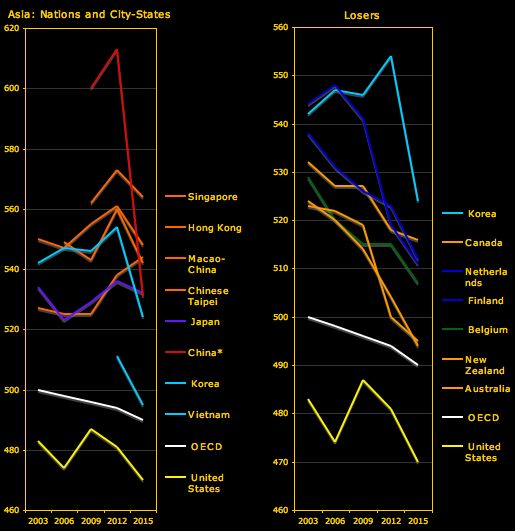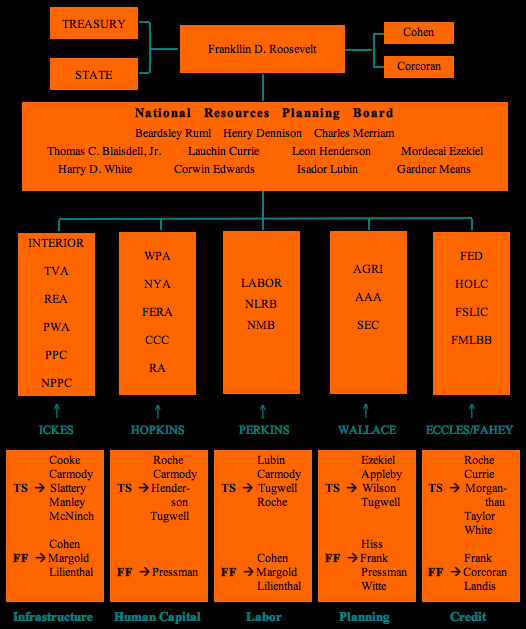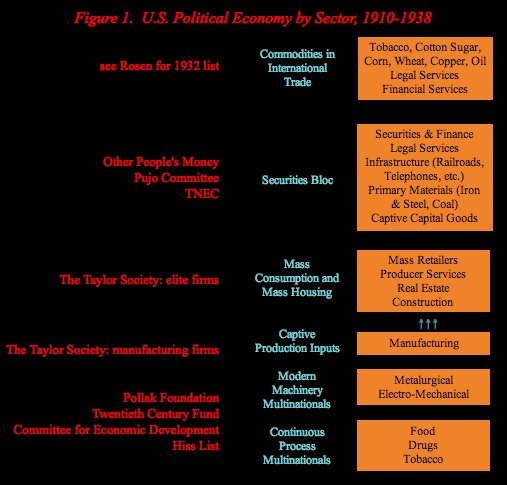Invisible University
aa1971@wayne.edu
TEST
.
. . the primary ontological units are not 'things' but
phenomena--dynamic topological
reconfigurations/entanglements/relationalities/(re)articulations
of the world. And the primary semantic units are not 'words' but
material-discursive practices through which (otic and semantic)
boundaries are constitutted. This dynamic is agency.
Miguel de Beistegui, Truth and Genesis : Philosophy as Differential Ontology (Indiana University Press, 2004), p. 244
Deleuze
replaces the classical problematic of the transcendental as involving
transcendance and possibility with that of immanence and genesis.
Transcendental empiricism is concerned with isolating the genetic and
immanent conditions of existence of the real.
Muriel Combes, Gilbert Simondon and the Philosophy of the Transindividual (MIT Press, 2013), pp. 2-3
Simondon's
approach entails a substitution of ontogenesis for traditional
ontology, grasping the genesis of individuals within the operation of
individuation as it is unfolding.
Joseph Margolis, The Unravelling of Scientism: American Philosophy at the End of the Twentieth Century (Cornell University Press, 2003), p. 15
.
. . the great question of history's constitutive role in the formation
and transformation of our cognizing powers is now largely ignored . .
.

Figure 1 is an effect of cultural-historical developmental processes, of which schooling itself is only one of several key inputs affecting the cognitive and cultural development of situated organisms (not Cartesian selves). Figure 1 is about the history and fate of the Enlightenment. It is also about processes of production, not only of goods and services, but of human beings themselves.
The emergence of the intellectual cadre essential to our present civilization is neither normative nor inevitable. Logical-scientific thinking (formal operational competence) on a mass scale is very recent (Flynn) and unevenly distributed (Engeström).
This site take two approaches to Figure1. The first is associated with and is an expression of the Progressivism of John Dewey and Lev Vygotsky. Excerpts and comments in this vein will be found in the PISA Results: Evolutionary, Historical, Developmental, and Psychological Perspectives. The second is associated with and is a critique of neo-liberalism. That critique begins here. This critique of neo-liberalism is also a critique of Progressivism.
In the progressive view, it is assumed that cognitive development is linear, ultimately realizing the goal is the Enlightenment trope of the rational individual in a market economy. This is wrong on two points. It fails to account for the persitence and renewed strength of ressentiment (racism and all its cognates; the election of Donald Trump); and it fails to account for the triumph of regressive narcissism--the nihilism of which Nietzsche spoke--the psychological side of mass consumption in the post-modern era.
The sharp decline in the scores of Korea, Finland, Netherlands, Belgium, Australia, New Zealand, and the United States suggests that the late twentieth and early twenty first centuries are where two lines of development--sociotechnical advance and cognitive regression--clash. Capitalism--at least advanced capitalism--requires advanced minds. Narcissistic regression--the culture of consumption (see Hall et. al., Criminal Identities and Consumer Culture)--undermines the very possibility of advanced cognitive development. (Jobs article)
Capitalism builds on two fundamentally opposed human processes: the discipline, deferred gratification, and sublimation that is the sine qua non of cognitive development, and an entropic drive emergent out of the proliferating appetites and desires of a population driven by increasingly complex psychological needs, stimulated and expressed in the marketplace. These appetites and desires of postmodern capitalism gnaw away at the potential for self-discipline that is central to cognitive development.
The media penetration of the nooks and crannies of everyday life, its orchestration of desire, its deployment of demons and heroes, its influence on reconfiguring the reference points for self-discipline, has yet to be appreciated, for it is not only as a theater of desire that the media functions. The media also provides powerfully influential models of language use and cognitive processing for a large subset of the population. (See Bronfenbrenner's bioecological model here.)
Figure 1a. PISA Math Scores, 2003 to 2015: 20 Developed Nations

Politics is theater, the kind of theater that could put Freud the semiotician out of business. According the psychoanalytic view, the things of everyday life are not what they seem, mere surface phenomena needing interpretation. But the GOP semiotic field reeks of sex and violence (see the GOP as the Stupid Party: an inadequate conceptualization //defense mechanisms and anchored by the semiosphere). (see "family values" as an "identity" forged through ("reconfiguring the reference points . . . ")
In Nietzsche two formulations of "nihilism": a literary-cultural formulation of despair at the loss of values; and a clinical formulation that might be called reverse bildung: the unwinding of higher-level organizational structures and practices linked to cognitive development, self-discipline, and capacity for strategic planning/praxis: entropy. See Dupre for a concise expression of this. Mass consumption, regressive narcissism (Hall) the highest stage of nihilism conceived of clinically. This is the triumph of capitalism. Organization at the level of capital; but entropy at the level of culture.

Asia: Nations and City-States enables us to clarify certain issues regarding test score comparability. Singapore, Hong Kong, Macao China, and Chinese Taipei ought to be thought of as city-states. Their population densities of around 5,000 persons per square kilometer, compared with European population densities of two to three hundred per square km, makes this clear. "China" was previously only Shanghai; now what is listed in the PISA report under "China" is Beijing, Shanghai, Jiangsu, and Guangdong (B-S-J-G). The precipitous decline of more than 80 points is no doubt primarily a result of the addition of the industrial areas of Jiangsu and Guangdong. The decline of Vietnam's score is likely due to the expanded geographical scope of the administration of the test.
Losers lets us see more clearly what's what among geographically stable test areas.
The genetic ontology that is the core of the "Trump" phenomenon is ressentiment and the mechanisms of defense.
biographical accounts of bildung: Davis, Kennan, Hillman (social process, agency, subjectivity)
UAW "factionalism"
metastability
| Genetic Ontology |
Sources (Full page here) |
| Primate Dominance and Deference |
Mazur, deWaal, Wrangham . . . |
| Paleolithic Dynamic Egalitarianism |
Whiten, Descola, Chase, Price . . . |
| Ressentiment & the Mechanisms of Defense (short-circuits) Lacan-Atwater Signifying Chain; Patrimonialism; Despotic regime; Racism; Nationalism; Fascism |
Nietzsche, Freud, Klein, Deleuze & Guattari, Clarke, Paxton, Smith, Knox . . |
| Bildung & the Will to Power (long-circuits, das übermensch; Jouissance) Progressive Narcisism; Individuation; Progressivism, Socialism, Communism the UAW and the Keynesian Elite |
Hegel, Nietzsche, Vygotsky, Piaget, Kohut, Alcorn . . . Lacan |
| Nihilism & the Last Man Regressive Narcissism and the Culture of Consumption; Repressive Desublimation; Disindividuation; Neoliberalism |
Nietzsche, Hall, Lacan, Ehrenberg, Stiegler, Illouz, Marcuse . . . |
Progressivism, the New Deal and its results, and the
barely recognizable, feeble remnant of the latter, the Democratic
Party of 2016--reached its apogee in the second New Deal, circa 1935-1938, had
its origins in late nineteenth century urban Progressivism, and was
dealt a death blow in the 2016 election. At its apogee it looked
like figure 2 (right), The Keynesian Elite in the New Deal State, 1910 to
1936.
The Keynesian Elite was emergent out of the input-output matrix of the mass consumption sector. Its primary enemy was the GOP establishment rooted in the securities bloc. Its ally of necessity was CIT.
Ontologies of PowerThe Keynesian Elite was emergent out of the input-output matrix of the mass consumption sector. Its primary enemy was the GOP establishment rooted in the securities bloc. Its ally of necessity was CIT.
In
this paper I apply network theory* to the analysis of the genesis and
structure of the Second New Deal state apparatus in the following
ways. First, I look at the input-output matrices of different
sectors of accumulation, and show that the chief executive officers of
leading corportions intersected with the polity in such a way that the
"state" under FDR could be better characterized as a segmented state
within which the Keynesian elite (rooted in mass consumption) finally
achieved parity with the two older elite formations--commodities in
international trade (cotton, tobacco, wheat, copper together with their
financial, legal, and commercial service providers), and the securities
bloc (rooted in infrastructure capital (iron, coal, railroads,
telephones and the financial institutions connected with marketing and
trading their securities, and the legal firms that serviced
them). Second, I examine the state apparatus itself and find that
the administrative core of the Secnd New Deal was a well-defined
personnel matrix comprised of a cadre of lawyers linked to Felix
Franfurter (FF) and Louis D. Brandeis (LDB), and network of technocrats
drawn from or closely associated with the Taylor Society (TS).
Within this analytical context I reconstruct the history of
LDB-FF x TS. And third, by applying network theory to the Taylor
Socety as inter-organizational matrix, I find that the strategic
discourse as well as the internal structure and compostion of the
Keynesian elite in the Second New Deal was determined by the circuit of
realization of mass capitalism.
Figure 2. The Keynesian Elite in the New Deal State, 1910-1936

Source: "Membership List, May 1927," in the Morris L. Cooke Papers, box 66, FDR Library, and
United States Government Manual, 1937
TS=Taylor Society business milieu; FF=Brandeis-Frankfurter legal milieu
LINK: The Keynesian Elite: Career Matrix
LINK: The Keynesian Elite in the New Deal State, 1910-1939

Immanence is the methodological principle of this site. As a first approximation, immanence means working outward from within a specific kind of empirical field. In this case, the empirical field is the five sets of interviews:
A. PF interviews (circa 1974 to 1977)
1. Leonard Klue, Michigan Steel Tube
2. Midland Steel N=35
3. Bildungs-proletarians
B. Jack Steels/Reuther Library interviews (circa 1960)
C. Neil Leighton interviews of Flint UAW members
| Leon Pody* |
Briggs, Murray Body |
UAW Local 212, 2 |
| Frank Fagan |
Murray Body | UAW Local 2 |
| Frank Fagan* | Murray Body | UAW Local 2 |
| Lloyd Jones* |
Murray Body | UAW Local 2 |
| Dick Frankensteen | Dodge Main |
UAW Local 3 |
| Dick Frankensteen* | Dodge Main | UAW Local 3 |
| Charles Watson | Dodge Main | UAW Local 3 |
| Harry Ross* | Dodge Main | UAW Local 3 |
| Richard Harris* |
Dodge Main | UAW Local 3 |
| Joe Adams | Dodge Main | UAW Local 3 |
| Joe Ptazynski |
Dodge Main | UAW Local 3 |
| Earl Reynolds | Dodge Main | UAW Local 3 |
| John Zaremba* |
Dodge Main | UAW Local 3 |
| John McDaniel | Packard |
UAW Local 190 |
| John McDaniel* | Packard | UAW Local 190 |
| Harry Kujawski | Packard | UAW Local 190 |
| Eddie Dvornik | Packard | UAW Local 190 |
| Adam Poplewski* |
Packard | UAW Local 190 |
| James Lindahl** |
Packard |
UAW Local 190 |
| Leonard Klue | MICHIGAN STEEL TUBEa | UAW Local 238 |
|
Paul Silver |
Detroit Steel Products |
UAW Local 351 |
| N = 35 interviewees |
MIDLAND STEEL |
UAW Local 410 |
| John Anderson |
CP, Midland Steel |
MESA, UAW 155 |
| Bill Jenkins | Chrysler Highland Park |
UAW Local 490 |
| Tony Podorsek |
body-in-white supervisor | Dodge, Cadillac |
* interviews conducted by Jack Skeels
** Lindahl collection at the Reuther Archives includes "Some Institutional Factors in Union
Decision Making."
a Emergence of a UAW Local (U. of Pittsburgh Press, 1975)
** Lindahl collection at the Reuther Archives includes "Some Institutional Factors in Union
Decision Making."
a Emergence of a UAW Local (U. of Pittsburgh Press, 1975)
Detroit's far East Side: Conner Avenue
| Leon Pody* |
Briggs, Murray Body |
UAW Local 212, 2 |
| Jack Zeller |
Chrysler Jefferson Ave |
UAW Local 7 |
| Ed Carey* |
Chrysler Jefferson Ave | UAW Local 7 |
| Francis Moore | Hudson |
UAW Local 154 |
| Ken Morris* |
Briggs |
UAW Local 212 |
| Art Vega* |
Briggs |
UAW Local 212 |
| Irwin Bauer |
Budd Wheel |
UAW Local 306 |
Michel Foucault, Remarks on Marx : conversations with Duccio Trombadori, translated by R. James Goldstein and James Cascaito (Semiotext(e), 1991)
It was a matter of calling the
theme of the subject into question once again, that great, fundamental
postulate which French philosophy, from Descartes until our own
time, had never abandoned. Setting out with psychoanalysis, Lacan
discovered, or brought out into the open, the fact that the theory of
the unconscious is incompatible with a theory of the subject (in the
Cartesian sense of the term as well as the phenomenological one). .
. Indeed, Lacan concluded that is was precisely the philosophy of
the subject which had to be abandoned on account of this
incompatibiity, and that the point of departure should be an analysis
of the mechanisms of the unconscious." p. 56-7
Barad, Meeting the Universe Halfway
Discourse is not a synonym for
language. Discourse does not refer to lingusitic or signifying
systems, grammars, speech acts, or conversations. To think of
discourse as mere spoken or written words forming descriptive
statements is to enact the mistake of representationalist
thinking. Discourse is not what is said; it is that which
constrains and enables that which can be said. Discursive
practices define what counts as meaningful statements. Statements are not the mere utterances of the originating consciousness of a unified subject;
rather, statements and subjects emerge from a field of
possibilities. This field of possibilities is not static or
singular but rather is a dynamic and contingent multiplicity.
146-7
Flint and Pontiac
| Norman Bully |
Buick (Flint) | UAW Local 599 |
| Arthur Case* |
Buick (Flint) | UAW Local 599 |
| Larry Jones |
Chevrolet (Flint) | UAW Local 659 |
| Bill Genski |
Fisher Body #1 (Flint) |
UAW Local 581 |
| Bill Genski* | Fisher Body #1 (Flint) | UAW Local 581 |
| Bud Simons* |
Fisher Body #1 (Flint) |
UAW Local 581 |
| Cliff Williams |
Yellow Cab (Pontiac) |
UAW Local 594 |
| Bob Travis** |
Flint |
|
| Henry Kraus** | Flint | |
| ohio and wisc |
||
| George Addes* | Willys Overland (Toledo) | |
| Joseph Ditzel* |
Chevrolet (Toledo) |
|
| James Roland* |
Chevrolet (Toledo) | |
| Roy H. Speth* |
Seaman Body (Milwaukee) |
|
| Ed Carey* |